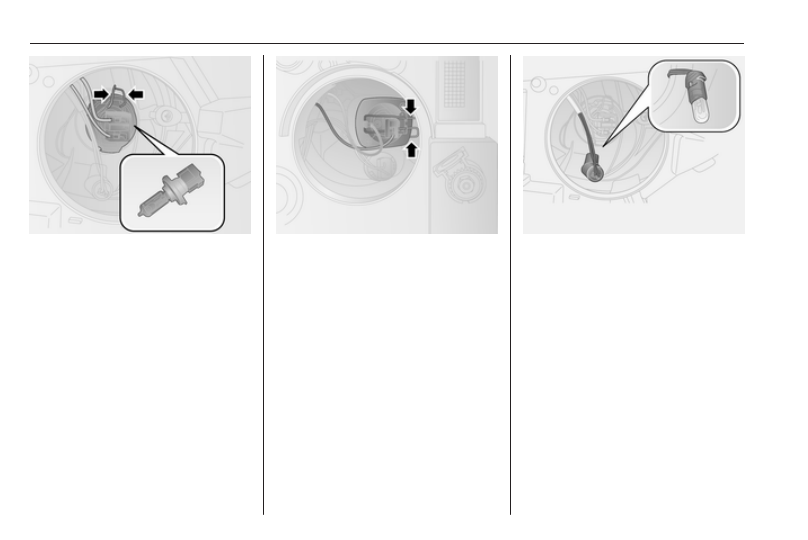Opel Combo (2018 year). Manual - part 10

150
Vehicle care
4. Insert new bulb in reflector so that
the locating tab of the bulb aligns
with the reflector recess.
5. Attach connector to bulb.
6. Engage wire clip.
7. Install protective cover.
High beam
1. Remove protective cover.
2. Detach connector from bulb.
3. Disengage wire clip and remove
bulb from reflector.
4. Insert new bulb in reflector so that
the bulb aligns with the reflector
recess.
5. Engage wire clip and attach
connector onto bulb.
6. Install protective cover.
Sidelight
1. Remove protective cover.
Withdraw bulb holder from
reflector by turning anticlockwise.
2. Remove bulb from socket, insert
new bulb.
3. Insert bulb holder in reflector.
4. Rotate clockwise to engage.
5. Install protective cover.
Daytime running light
1. Remove protective cover.